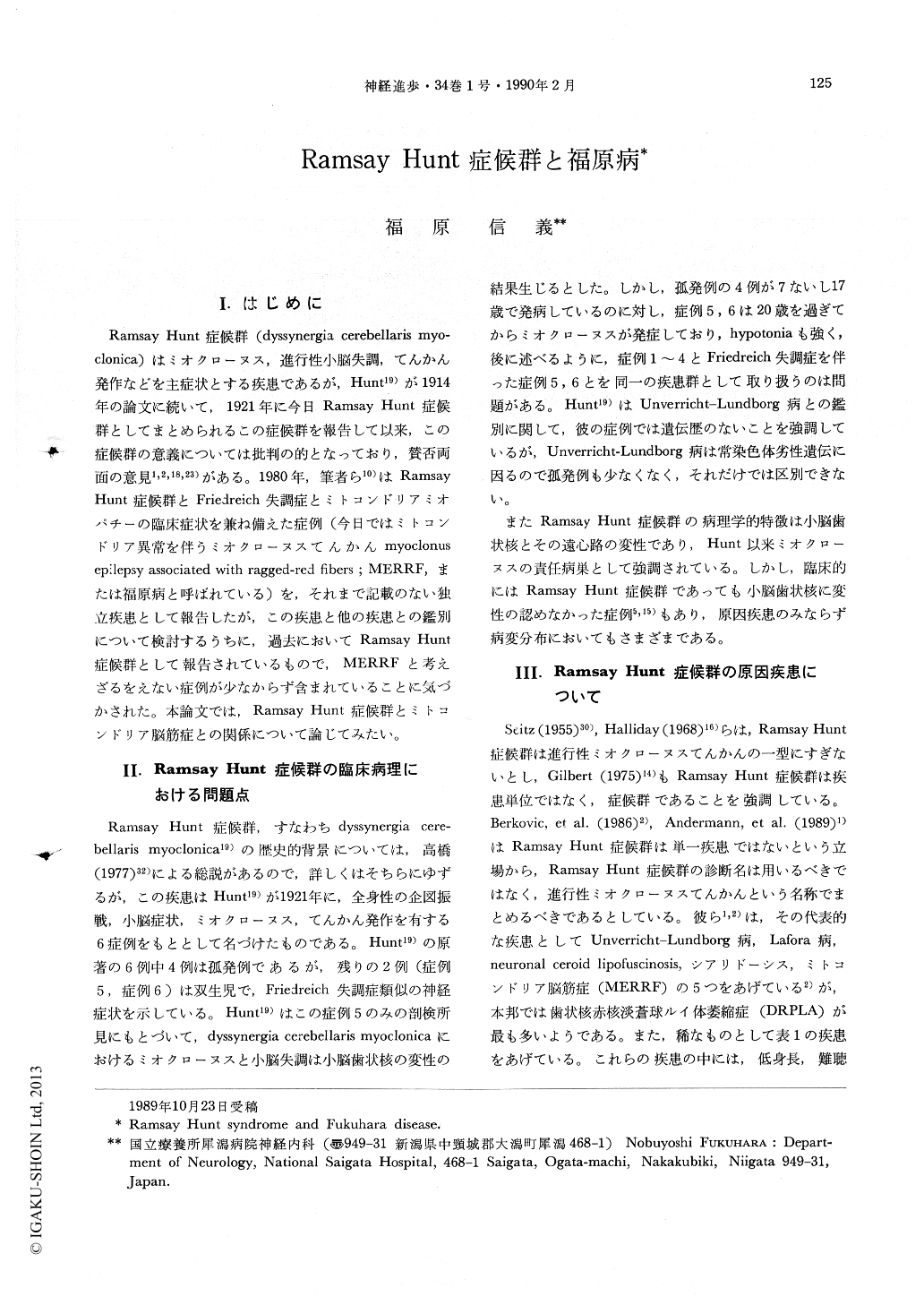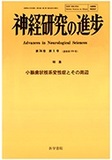Japanese
English
- 有料閲覧
- Abstract 文献概要
- 1ページ目 Look Inside
I.はじめに
Ramsay Hunt症候群(dyssynergia cerebellaris myoclonica)はミオクローヌス,進行性小脳失調,てんかん発作などを主症状とする疾患であるが,Hunt19)が1914年の論文に続いて,1921年に今日Ramsay Hunt症候群としてまとめられるこの症候群を報告して以来,この症候群の意義については批判の的となっており,賛否両面の意見1,2,18,23)がある。1980年,筆者ら10)はRamsay Hunt症候群とFriedreich失調症とミトコンドリアミオパチーの臨床症状を兼ね備えた症例(今日ではミトコンドリア異常を伴うミオクローヌスてんかんmyoclonus epilepsy associated with raggedred fibers;MERRF,または福原病と呼ばれている)を,それまで記載のない独立疾患として報告したが,この疾患と他の疾患との鑑別について検討するうちに,過去においてRamsay Hunt症候群として報告されているもので,MERRFと考えざるをえない症例が少なからず含まれていることに気づかされた。本論文では,Ramsay Hunt症候群とミトコンドリア脳筋症との関係について論じてみたい。
Ramsay Hunt syndrome is defined as the triad of (a) severe myoclonus, (b) progressive ataxia. and (c) mild epilepsy and cognitive change (Marsden & Obeso23)). The causes of Ramsay Hunt syndrome are various. The most prevailing disease among the differential list of Ramsay Hunt syndrome are hereditary dentatorubral-pallidoluysian atrophy (DRPLA) and myoclonus epilepsy associated with mitochondrial myopathy (MERRF; Fukuhara disease) in Japan, differing from that neurolipofuscinosis, Lafora disease and MERRF are the most prevailing in Europe and America.

Copyright © 1990, Igaku-Shoin Ltd. All rights reserved.


